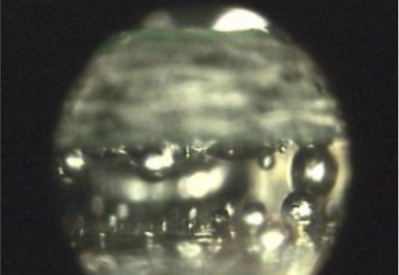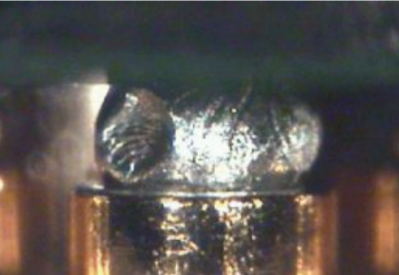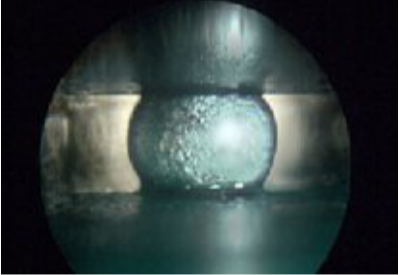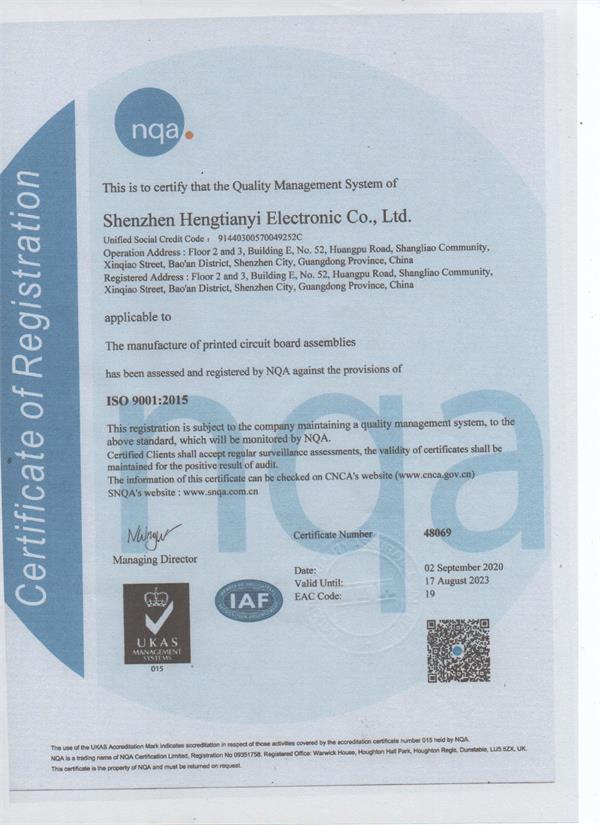











Global high-mix volume high-speed PCBA manufacturer
9:00 -18:00, Mon. - Fri. (GMT+8)
9:00 -12:00, Sat. (GMT+8)
(Except Chinese public holidays)












Global high-mix volume high-speed PCBA manufacturer
9:00 -18:00, Mon. - Fri. (GMT+8)
9:00 -12:00, Sat. (GMT+8)
(Except Chinese public holidays)
Due to technological advancements, PCB design for small and complex chips has experienced a huge rise in demand. Hence, working with a packaging method that accommodates these high I/O density chips while ensuring cost-effectiveness is important. This is where BGA plays an important role.
In this article, you will understand what BGA assembly is, its pros and cons, and the challenges faced during assembly. We will also explain how to check the quality of solder joints. Please read on as we explain the topic further.
There is a need to understand what BGA is before venturing into what BGA assembly is all about.

Time is money in your projects – and PCBasic gets it. PCBasic is the pcb assembly company that delivers fast, flawless results every time. Our comprehensive PCB Assembly Services include expert engineering support at every step, ensuring top quality in every board. As a leading PCB Assembly Manufacturer, we provide a one-stop solution that streamlines your supply chain. Partner with our advanced PCB Prototype Factory for quick turnarounds and superior results you can trust.

BGA(Ball Grid Array) is an integrated circuit package (IC package) in which the electrical connection is achieved by arranging small soldering balls in a grid pattern. This type of packaging is primarily used for high-density applications and offers significant improvements over traditional packaging methods such as perforated packaging or surface mount components (SMD).
In BGA packages, the traditional pins are replaced by small solder balls that are arranged in a matrix or grid at the bottom of the element. These soldering balls connect the BGA chip to the PCB through a process called ball grid array soldering. BGA components are widely used in high-speed and high-power applications that require advanced thermal management and electrical performance.
BGA assembly refers to the process of mounting ball grid array (BGA) components onto a printed circuit board (PCB) through a technique called ball grid array soldering. Instead of using pins in traditional integrated circuit packages, BGA uses welded balls arranged at the bottom of the component that act as an electrical connection between the BGA chip and the PCB, providing efficient data transmission and power supply.
PCBA manufacturers use BGA assembly to mount devices with hundreds of pins. Unlike traditional SMD packaging, BGA assembly uses an automated process, which means that the soldering process requires precise control. By using a thermal enhancement mechanism to reduce resistance, BGA assembly provides better thermal performance and more stable electrical connections than traditional packaging methods.
In addition, BGA assembly has obvious advantages in terms of functional capabilities. The high-density design of the BGA assembly makes it ideal for integrated circuits that require high-speed and high-power processing. Especially for those applications that require high thermal management and electrical performance, such as high-frequency processors and memory chips, BGA assembly is the ideal.
Next, we will delve into the advantages of BGA assembly over traditional packaging methods and its application in modern electronics.
Below are the benefits of BGA assembly.

BGA assembly involves the use of more solder balls. This causes an increase in the connection between these balls. The connection leads to an increase in the density of connections. Also, these numerous solder balls present reduce the space available on the circuit board. This leads to lighter and smaller products.
BGA assembly offers better electrical performance. This quality is due to the shorter path between the circuit board and the die. BGA assembly dissipates heat often due to its tiny size. Also, this package lacks pins, which can easily bend and break, increasing its electrical performance and stability.
BGA assembly ensures improved heat dissipation. It possesses this quality due to its low thermal resistance and tiny size.
Through BGA assembly, the PCB space is well utilized. This is because the soldering balls usually self-align underneath the board. BGA assembly ensures the use of the entire circuit board.

The process of BGA assembly deals with the mounting and soldering the BGA components on PCBs. Here are the steps:
This step involves preparing printed circuit boards. The process is possible by applying solder paste to pads where the BGA soldering will happen. The solder paste comprises flux and solder alloy, which aids in soldering.
This step involves the application of solder paste on the PCB metal pads through stencil printing. The stencil’s thickness helps determine the quantity of solder paste to use. Utilize laser-cut stencils to ensure a uniform solder paste transfer to the PCB.
BGA components are usually more easily mounted than QFP components, which have a pitch of 0.5 mm. The physical characteristics of BGA components cause them to have high manufacturability.
This step is also called the “Pick-and-place” step. The process describes how an automated machine picks and places the BGA components on the printed circuit boards. The machines usually rely on high-quality cameras. This is to ensure the accurate placement of the components.
Here, a reflow oven helps to heat the board. The reflow oven melts the solder paste. This causes a strong bond between the circuit board and the BGA components. Also, small metallic balls underneath the BGA components melt inside the solder joints.
Inspection is important to ensure that the BGA components are properly fixed. Also, there shouldn’t be defects like shorts, open connections, etc. Due to the physical structures of the BGA components, visual inspection won’t work. Therefore, an X-ray inspection helps to check soldering defects. These defects include short circuits, voids, air holes, and more. Then, the electrical tests help to find defects like short and open circuits.

Ensuring good soldering in BGA assembly is key to ensuring the performance and reliability of BGA PCB assembly. So how do you ensure that soldering is OK during BGA assembly? Here are some best practices from years of experience that can help you achieve good soldering in your BGA assembly:
1. The first step to ensuring good soldering starts with a good BGA PCB design. When designing BGA PCBs, you need ensure proper pad design, good thermal management, and ball spacing. Also, the width and spacing of the wires on the pad must be designed well, which is essential for reliable soldering.
2. Use high quality solder paste and apply appropriate amount of solder paste to avoid excessive or insufficient solder paste. In the BGA assembly process, the solder paste is coated on the PCB pad through the template, so the steel mesh template must be accurate. Only accurate and consistent solder paste coating can achieve good solder joints.
3. Precise control of the temperature curve to avoid overheating or underheating resulting in defects such as cold welding spots.
4. After the BGA PCB is assembled, use X-ray equipment to check whether there are cold welding spots, pores, Bridges and other defects; Use electrical testing to identify short or open circuit problems. Because solder joints are often hidden under BGA components, problems cannot be fully detected by visual inspection alone.
5. Choosing a reputable BGA assembly supplier is crucial. BGA assembly suppliers with experience in handling complex assemblies are able to ensure that the process meets a high standard. Choosing a BGA PCB assembly supplier that specializes in BGA assembly services ensures higher assembly quality.
6. The BGA assembly process should be carried out in a controlled environment to prevent contamination such as dust or moisture that could affect the quality of the welding.
Although BGA assembly offers many benefits, it comes with challenges. Below are some challenges faced during BGA assembly.
Soldering Defects
The soldering process isn’t easy, and even the use of machines isn’t accurate. Therefore, it is possible to face soldering defects during BGA assembly. These defects include excessive soldering, openings, solder bridges, component shifting, etc.
Repair and Rework
Repair and rework tasks on BGA Assemblies are usually challenging. This is because of its dense components. Also, there is a need for specialized skills and tools.
Inspection Limitations
The BGA assembly is always very close to the solder balls. This makes it very challenging to perform an inspection on the package.
Time-Consuming Process
The process of BGA assembly could be time-consuming. This is because the engineer must properly attach the components to the board before soldering.
Solder joints are very complex and have irregular shapes. Therefore, checking the quality by visual inspection would take time and effort. Thus, for more complex issues, it’s advisable to use X-ray imaging. Let us consider both methods.
Visual Inspection (Optical Inspection)
This method for checking solder joint quality is only effective for detecting defects. These include closed circuits, the absence of solder in joints, and more. The method is straightforward because you only need the naked eye to inspect.
X-ray Inspection

This method detects bridging, incomplete wiring, voiding, and other defects. Also, it can detect majority of defects on leads and pads. This method involves inspecting the solder joints using an X-ray device. The X-ray machine is composed of the X-ray source and detector. Both are connected to the system and used to transfer the image to a screen. X-ray inspection is fast and automated, thereby saving time.
There are many sub-categories of PCB assembly, such as layered layers: single-sided, double-sided, and multi-layer circuit boards; material properties: FPC, PCB, FPCB. Thus, when you choose a PCB assembly manufacturer for your project, you need to have a deep understanding of the characteristics of the project to know which points need special attention to pick the most suitable pcb assembly manufacturer.
BGA assembly professional factory, PCBasic provides you with turnkey BGA assembly Services.
BGA assembly is necessary for different industries. This is because of its reliability, effectiveness, and efficiency. Today, BGA assembly has become an important advancement in technology. There could be soldering defects, and the process could be time-consuming. Yet, BGA assembly offers many benefits. These include better electrical performance, increased density, and improved heat dissipation.








1
Professional engineers will review the order, conduct process evaluation and program production.
2
Store BGA at low temperature, bake before going online and standardize operations
3
Complete process capability, sophisticated BGA placement machine
4
Professional PCBA inspection services, such as SPI, AOI, X-Ray, etc.
5
Fixture production and functional testing
6
Fastest delivery time of 3-5 days




Assembly Enquiry
Instant Quote
Phone contact

+86-755-27218592
In addition, we've prepared a Help Center. We recommend checking it before reaching out, as your question and its answer may already be clearly explained there.
Wechat Support

In addition, we've prepared a Help Center. We recommend checking it before reaching out, as your question and its answer may already be clearly explained there.
WhatsApp Support

In addition, we've prepared a Help Center. We recommend checking it before reaching out, as your question and its answer may already be clearly explained there.
